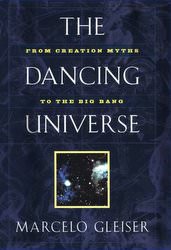
To understand physics is to understand the motion of the objects surrounding our everyday lives. Studying wheels that turn on the ground is simple. Studying galaxies that spin is another thing altogether. However, the principles of a galaxy’s motion and that of a wheel are amazingly similar. Sometimes all we need do is build an imaginary scenario in our minds to postulate one truth, once given another.
Gleiser really promotes this idea of mental model building in his book as he chronologically steps through 3000 years of history. Further, by placing the reader beside the historical figure, he gives a feel for the real person. He does this by locating the person geographically, identifying supporters and detractors, and adding descriptions of any relevant tools. For example, Philolaus of Croton, around 450 BC, lived in Southern Italy but was encouraged by an unfriendly mob to move to Greece. Using Pythagorean principles, he postulated a framework of celestial objects that explained day and night on Earth. In so doing he was the first to place the sun at the centre of the universe. Philolaus had no tools at hand, but he did live with a collection of like minded thinkers. In a style like this, Gleiser not only shows the contributions of many people but he also shows how society’s collective knowledge replaced the belief that god(s) were responsible.
The chronological sequence gets a rough start as Gleiser begins by thoroughly assessing primitive philosophy. The first chapter delves into creation myths of long ago when people without much information tried to build a comprehension of their existence. With this, a reader may expect a strong leaning toward philosophy throughout. This is not the case, as aside from particular researchers involved with both physics and philosophy, the remaining contents fixates purely on the progress of physics. As expected, there are: the Greeks and their postulating, the trials between the Roman Catholic church and science, the empowerment of universities, and the transcendence of the individual. Some early researchers referred to may be unknown, but otherwise Gleiser includes all the big names.
This study of the main contributors turns out to be Gleiser’s actual intent. He uses this book as the text in a large physics class for non-science majors. Hence, though he alludes to the value of physics, he focuses on the people and their contributions. He likely has been doing this for some time as all his descriptions are extremely clear, simple and easy to follow. For instance, he uses the traditional means of describing special relativity; this being a person in a train and another at the station. Yet, he clearly describes the experimental basis for never having light at rest and thus needing light to have the same speed independent of the observer. No equations reside in the pages, nor pictures, though a few simple diagrams facilitate understanding. Because of this, Glacier’s non-science majors are likely very thankful.
However, Glacier short changes his students. Though his knowledge of physics and refined presentation skills comes across very well, he doesn’t tempt the students (or other readers) to deepen their understanding. For example, there is no push for them to spend more time wondering why the physical laws exist and are (apparently) universal. I liked the very brief discussion regarding the big bang and the time immediately before and after. Sadly, I didn’t really see any hooks that might draw in a reader. As such, this book is a great review and summary but does very little to encourage the advancement of knowledge, i.e., the making of new researchers.
The very word cosmology engenders visions of apparently unending borders. Going on a mission to explore where none have gone before seems like the only game in town. Marcelo Gleiser in his book The Dancing Universe provides some real background for those non-specialists who want to know more about the borders. And should society’s interest continue to grow, there just might come a time when people can travel to find if a border exists.
Review by Mark Mortimer
Read more reviews online, or purchase a copy from Amazon.com.
